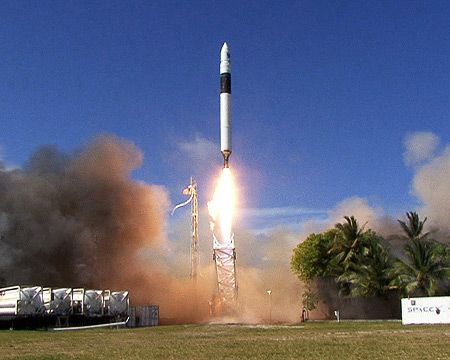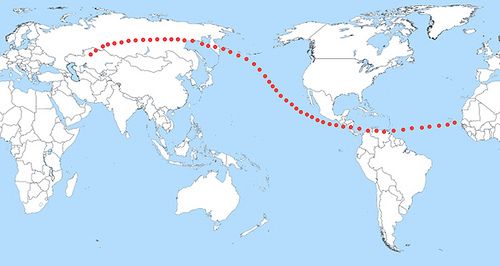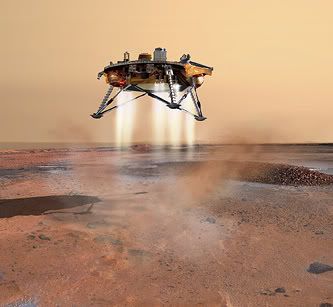DEAFENING SILENCE: Media Response to the May 9th Event
and its Implications Regarding the Truth of Disclosure
by Jonathan Kolber
http://www.disclosureproject.org/May9response.htm
My intent is to establish that the media’s curiously limited coverage of the May 9, 2001 National Press Club briefing is highly significant.
At that event, nearly two dozen witnesses stepped forward and offered their testimony as to personal knowledge of ET’s and ET-related technologies. These witnesses claimed top secret clearances and military and civilian accomplishments of the highest order. Some brandished uncensored secret documents. The world’s major media were in attendance, yet few reported what they saw, most neglecting to even make skeptical mention.
How can this be? Major legal trials are decided based on weaker testimony than was provided that day. Prison sentences are meted out on less. The initial Watergate evidence was less, and the implications of this make Watergate insignificant by comparison. Yet the silence is deafening.
Three Possibilities:
If true, the witness testimony literally ushers in the basis for a whole new world of peace and prosperity for all. Validating the truth of Disclosure is probably the most pressing question of our times. The implications for the human future are so overwhelming that virtually everything else becomes secondary. However, the mass media have not performed validation. No investigative stories seeking to prove or disprove the witness testimony have appeared.
This cannot be due to lack of material; in the remainder of this article I will perform validation based upon material handed to the world’s media on May 9th.
In my view, only three possibilities exist: the witnesses were all lying, they were all delusional, or they were documenting the greatest cover-up in history. The reason is that if any one witness were neither lying nor delusional, then the truth of Disclosure is established. Let’s examine each possibility in turn.
If the witnesses were lying, a reasonable observer would ask, “where is the payoff?” What is the possible benefit to a liar pleading for the chance to testify before Congress under oath? The most likely payoff would be a trip to jail. These witnesses have not openly requested any financial compensation, speaking engagements or the like, and the Disclosure Project’s operation cannot support a payoff to dozens of persons. A cursory evaluation of its “products” coupled with a visit to its Charlottesville offices will establish this. Further, the parent organization, CSETI, is an IRS 501C3 nonprofit organization, and its lack of financial resources is a matter of public record. So the notion that the witnesses were doing so for material benefit is unsupported by facts at hand.
To my knowledge, large numbers of persons do not collude to lie without some compelling expected benefit. Other than money, the only such reason I can conceive in this case would be ideology. I wonder what radical extremist “ideology” could plausibly unite such a diverse group of senior corporate and military witnesses, nearly all of whom have previously displayed consistent loyalty to the United States in word and deed? I find none, and I therefore dismiss lying as implausible.
Further, the witnesses claimed impressive credentials. Among them were a Brigadier General, an Admiral, men who previously had their finger on the nuclear launch trigger, air traffic controllers, Vice Presidents of major American corporations—persons who either routinely have had our lives in their hands or made decisions affecting everyone. To my knowledge, in the half-year since May 9th, not a single claimed credential has been challenged in a public forum. Were they lying en masse, such an exposure would be a nice feather in the cap of some reporter. However, it hasn’t happened.
If all the witnesses were delusional, then a reasonable observer would presume that such “mass psychosis” did not suddenly manifest. That is, a number of witnesses would have shown psychotic tendencies in the past, in some cases probably including hospitalization. To my knowledge, this has not been alleged.
If they were documenting the greatest cover-up in history, and especially as briefing books that enumerated details of specific cases were handed out on May 9th to the dozens of reporters present, coverage should have dominated the media ever since, with a national outcry for hearings. This did not happen either.
Implications:
What do the above facts and inferences imply about the state of affairs in the media and the credibility of the witness testimony? In my view, they imply a lot.
If the witnesses were neither lying nor delusional, then the deafening media silence following May 9th implies an intentional process of failure to explore and reveal the truth. Said less politely, it implies censorship. (If I am right, this is itself an explosive statement, worthy of significant media attention—which it will not receive.) The only stories comparable in significance to May 9th would be World War III, a plague decimating millions, or the like. Yet between May 9th and September 11th, the news media was saturated with stories that are comparatively trivial.
Briefing documents were provided to reporters present. These books provided much of due diligence necessary for those reporters to explore the truth. However, neither Watergate-type coverage nor exposure of witness fraud has followed.
One of the witnesses reported how he became aware of 43 persons on the payrolls of major media organs while in fact working for the US government. Their job was to intercept ET-related stories and squelch, spin or ridicule. If we accept his testimony as factual, it provides a plausible explanation for the deafening silence following May 9th.
There is a bright spot in this situation. Some of the media did provide coverage, if only for a few days. This suggests that those who control media reporting do not have a monolithic power; they can be circumvented. The event did run on the internet and was seen by 250,000 viewers, despite “sophisticated electronic jamming” during the first hour (words attributed to the broadcast provider, not the Disclosure Project). Indeed, it continues to be fully documented at the Project’s web site.
Conclusions:
Since an expose of witness deceit or mass psychosis would itself have been a good, career-building story for some reporter, but no such story has appeared, I conclude that these witnesses are who they claim to be.
If these witnesses are who they claim to be, then they presented testimony they believe truthful. Yet no factual detail of any of that testimony has since been disputed in the media. Half a year is enough time to do the research. I believe the testimony is true as presented.
If the data is true as presented and the media are essentially ignoring what is indisputably the greatest story of our era, then the media are not performing the job they claim to do. Either they are being suppressed/censored, or they do not believe the public would find this subject interesting.
The tabloids continuously run stories on ET-related subjects, and polls show high public interest in the subject, so lack of interest value cannot be the explanation. I conclude that there is active suppression. This is corroborated by the witness claim of 43 intelligence operatives on major media payrolls.
Despite active suppression, enough coverage of the May 9th event happened in major publications and broadcast media to prove that the suppression can be thwarted. An event of significant enough impact and orchestration can break through the censorship. Millions of persons previously unaware of or dubious about ET-related technologies and their significance for ending our dependence on Arab oil have since become aware.
We live in a controlled society, one in which the control is secretive yet masquerades as openness. Yet, as proven May 9th, this control can be overcome by the concerted efforts of determined groups of persons. We must seek such opportunities again.




